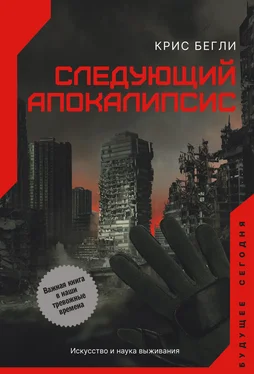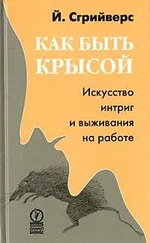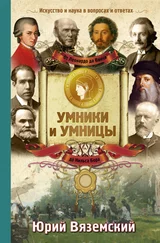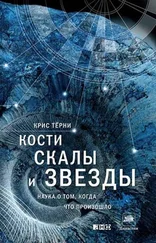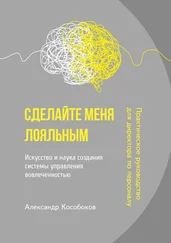Philip P. Betancourt, “The Aegean and the Origins of the Sea Peoples,” in The Sea Peoples and Their World: A Reassessment, ed. E. D. Oren (Philadelphia: University of Pennsylvania Press, 2000); John J. Janusek, “Collapse as Cultural Revolution: Power and Identity in the Tiwanaku to Pacajes Transition,” in The Foundations of Power in the Prehispanic Andes, Archaeological Papers No. 14, eds. K. J. Vaughn, D. E. Ogburn, and C. A. Conlee (Washington, DC: American Anthropological Association, 2004), 175–209.
This notion of our explanations of the past intersecting with contemporary concerns has been voiced by archaeologists for decades, for example in Richard R. Wilk, “The Ancient Maya and the Political Present,” Journal of Anthropological Research 41 (1985): 307–326.
Guy D. Middleton, “Nothing Lasts Forever: Environmental Discourses on the Collapse of Past Societies,” Journal of Archaeological Research 20 (2012): 257–307.
Joel W. Palka, “Ancient Maya Defensive Barricades, Warfare, and Site Abandonment,” Latin American Antiquity 12, no. 4 (December 2001): 427–430; C. Hernandez, “Defensive Barricades of the Maya,” in Encyclopaedia of the History of Science, Technology, and Medicine in Non-Western Cultures, ed. H. Selin (Dordrecht: Springer, 2014), https://doi.org/10.1007/978-94-007-3934-5_10086-1; Takeshi Inomata, “The Last Day of a Fortified Classic Maya Center: Archaeological Investigations at Aguateca, Guatemala,” Ancient Mesoamerica 8, no. 2 (1997): 337–351.
Christopher Begley. “Ancient Mosquito Coast: Why Only Certain Material Culture Was Adopted from Outsiders,” in Southeastern Mesoamerica: Indigenous Interaction, Resilience, and Change, ed. Whitney A. Goodwin et al. (Louisville: University Press of Colorado, 2021), 157–178.
Scott Hutson et al., “A Historical Processual Approach to Continuity and Change in Classic and Postclassic Yucatan,” in Beyond Collapse: Archaeological Perspectives on Resilience, Revitalization, and Transformation in Complex Societies, ed. Ronald K. Faulseit (Carbondale: Southern Illinois University Press, 2016), 287–19.
H. J. Spinden, “The Population of Ancient America,” Geographical Review 18, no. 4 (1928): 641–660, https://doi.org/10.2307/207952.Notes to Chapter 1 251.
Jared Diamond, Collapse: How Societies Choose to Fail or Succeed (New York: Viking Press, 2005).
Some examples include Justine Shaw, “Climate Change and Deforestation: Implications for the Maya Collapse,” Ancient Mesoamerica 14 (2003): 157–167 and Elliot M. Abrams and David J. Rue, “The Causes and Consequences of Deforestation Among the Prehistoric Maya,” Human Ecology 16 (1988): 377–395.
Cameron L. McNeil, David A. Burney, and Lida Pigott Burney, “Evidence Disputing Deforestation as the Cause for the Collapse of the Ancient Maya Polity of Copan, Honduras.” Proceedings of the National Academy of Sciences of the United States of America 107, no. 3 (2010): 1017–1022; Richard E. W. Adams, “The Collapse of Maya Civilization: A Review of Preview Theories,” in The Classic Maya Collapse, ed. T. Patrick Culbert (Albuquerque: University of New Mexico Press, 1973), 21–34.
One excellent critique of several books about societal collapse is Joseph Tainter, “Collapse, Sustainability, and the Environment: How Authors Choose to Fail or Succeed,” Reviews in Anthropology 37, no. 4 (2008): 342–371, https://doi.org/10.1080/00938150802398677/.
Nick Romeo, “How Archaeologists Discovered 23 Shipwrecks in 22 Days,” National Geographic, July 11, 2016, www.nationalgeographic.com/adventure/article/greece-shipwrecks-discovery-fourni-ancient-diving-archaeology.
Edward Gibbon, The History of the Decline and Fall of the Roman Empire, 6 vols. (London: W. Strahan and T. Cadell, 1776).
Readers who want to explore further the decline of the Western Roman Empire might want to look at the following texts that influenced my understanding of this era, including Simon Esmonde Cleary, The Roman West, AD 200–500: An Archaeological Study (Cambridge, UK: Cambridge University Press, 2013); Peter Heather, The Fall of the Roman Empire: A New History of Rome and the Barbarians (New York: Oxford University Press, 2006); Stephen Mitchell, A History of the Later Roman Empire, AD 284–641 (Malden, MA: John Wiley & Sons, 2014); and Chris Wickham, Framing the Early Middle Ages: Europe and the Mediterranean, 400–800 (New York: Oxford University Press, 2005).
Ainit Snir et al., “The Origin of Cultivation and Proto-Weeds, Long Before Neolithic Farming,” PLOS ONE 10 no. 7 (2015): e0131422, https://doi.org/10.1371/journal.pone.0131422.
John R. Swanton, The Indian Tribes of North America, Bulletin 145 (Washington, DC: Smithsonian Institution, Bureau of American Ethnology, 1952).
William Denevan, ed., The Native Population of the Americas in 1492 (Madison: University of Wisconsin Press, 1976).
Chris Brierley et al., “Earth System Impacts of the European Arrival and Great Dying in the Americas After 1492,” Quaternary Science Reviews 207 (March 2019): 13–36.
A. Gwynn Henderson, “Dispelling the Myth: Seventeenth- and Eighteenth-Century Indian Life in Kentucky,” Register of the Kentucky Historical Society 90, no. 1 (1992): 1–25.
Michael Wilcox, The Pueblo Revolt: An Indigenous Archaeology of Contact (Berkeley: University of California Press, 2009).
Gerald Horne. “The Apocalypse of Settler Colonialism,” Monthly Review 69, no. 11 (2018): 1–22; Gerald Horne, The Apocalypse of Settler Colonialism: The Roots of Slavery, White Supremacy, and Capitalism in Seventeenth-Century North America and the Caribbean (New York: Monthly Review Press, 2018).
Adam Nemett, We Can Save Us All (Los Angeles: Unnamed Press, 2018).
Adam Nemett writes in depth about our experience at the survival expo in Adam Nemett, “Journal of a Progressive Prepper: What Happens When a Homesteading Experiment Collides with a Global Pandemic?” Rolling Stone, June 2021, www.rollingstone.com/culture/culture-features/pandemic-prepper-homesteader-journal-1167658/.
James J. Aimers, “What Maya Collapse? Terminal Classic Variation in the Maya Lowlands,” Journal of Archaeological Research 15, no. 4 (2007): 329–377.
Lori E. Wright and Christine D. White, “Human Biology in the Classic Maya Collapse: Evidence from Paleopathology and Paleodiet,” Journal of World Prehistory 10, no. 2 (1996): 147–198, www.jstor.org/stable/25801093.
Marie Charlotte Arnauld, Chloé Andrieu, and Mélanie Forné, “‘In the Days of My Life’: Elite Activity and Interactions in the Maya Lowlands from Classic to Early Postclassic Times (The Long Ninth Century, AD 760–920),” Journal de la Société des Américanistes 103 (2017): 41–96, www.jstor.org/stable/26606790.
Many articles discuss the post-collapse Maya world, but I returned to these: T. Kam Manahan and Marcello A. Canuto, “Bracketing the Copan Dynasty: Late Preclassic and Early Postclassic Settlements at Copan, Honduras.” Latin American Antiquity 20, no. 4 (2009): 553–580 and Diane Z. Chase and Arlen F. Chase, “Framing the Maya Collapse: Continuity, Discontinuity, and Practice in the Classic to Postclassic Southern Maya Lowlands,” in After Collapse: The Regeneration of Complex Societies, ed. Glenn M. Schwartz and John J. Nichols (Tucson: University of Arizona Press, 2006).
Читать дальше
